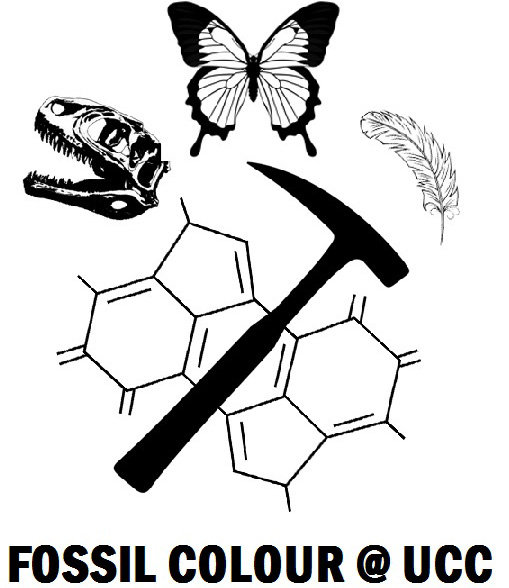News
New paper in Proceedings B
UCC palaeontologists have discovered new evidence on what type of animal is the bizarre 300 million year old fossil known as the “Tully Monster”. The new findings show that the Tully Monster may not be a backboned animal as previously thought.
This new twist in the tale of the Tully Monster is based on cutting-edge analyses of melanin granules – melanosomes – in Tully’s weird stalked eyes. Chemical tests show that Tully’s eye melanosomes resemble those in animals without backbones.
[caption id="attachment_3382" align="alignright" width="300"]
 Dr Chris Rogers using the scanning electron microscope at University College Cork to look at melanosomes in the eyes of modern octopus.[/caption]
Dr Chris Rogers using the scanning electron microscope at University College Cork to look at melanosomes in the eyes of modern octopus.[/caption]
The study, published today in the journal Proceedings of the Royal Society B: Biological Sciences, was led by UCC’s Drs Chris Rogers and Maria McNamara with an international team of scientists from the UK, USA and Japan.
The team used cutting-edge techniques to analyse the structure and chemistry of the eyes of the Tully Monster fossil, along with various other fossils and modern animals.
The eyes of Tully contain layers of melanosomes, a feature thought to exist only in the eyes of animals with backbones. Surprisingly, however, the new study shows that these layers are also found in the eyes of animals without backbones, such as octopus and squid. ‘I was amazed’ said Dr Rogers. ‘for decades scientists have failed to identify the pigments in the eyes of animals like the octopus, but our chemical tests show it’s definitely melanin.’ Powerful X-ray analyses show that the eye melanosomes of animals with and without backbones contain different metals. Controversially, the metals in the Tully Monster’s eyes are like those of animals without backbones. ‘This means that invertebrates are still contenders for the Tully animal,’ says senior author Dr McNamara. ‘The riddle of what kind of fossil creature this is continues, but future X-ray work will probably play an important part in figuring out the identity of Tully Monster and other enigmatic fossils.’
Rogers, C.S., Astrop, T.I.A., McNamara, M.E., Webb, S., Ito, S., Wakamatsu, K. Synchrotron-X-ray absorption spectroscopy of melanosomes in vertebrates and cephalopods: implications for the affinity of Tullimonstrum. Proceedings B, 286, 20191649. DOI: https://doi.org/10.1098/rspb.2019.1649.
See below for news items on the study:
http://theconversation.com/the-mysterious-tully-monster-fossil-just-got-more-mysterious-126531
https://www.livescience.com/tully-monster-more-mysterious.html
https://www.newshub.co.nz/home/world/2019/11/bizarre-ancient-sea-creature-baffles-scientists.html
http://www.beachwoodreporter.com/people_places_things/the_illinois_tully_monster_jus.php
https://earthsky.org/earth/tully-monster-mystery-fossil-invertebrate-vertebrate
https://www.metro.news/why-the-tully-monster-just-got-more-mysterious/1794731/


